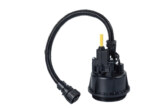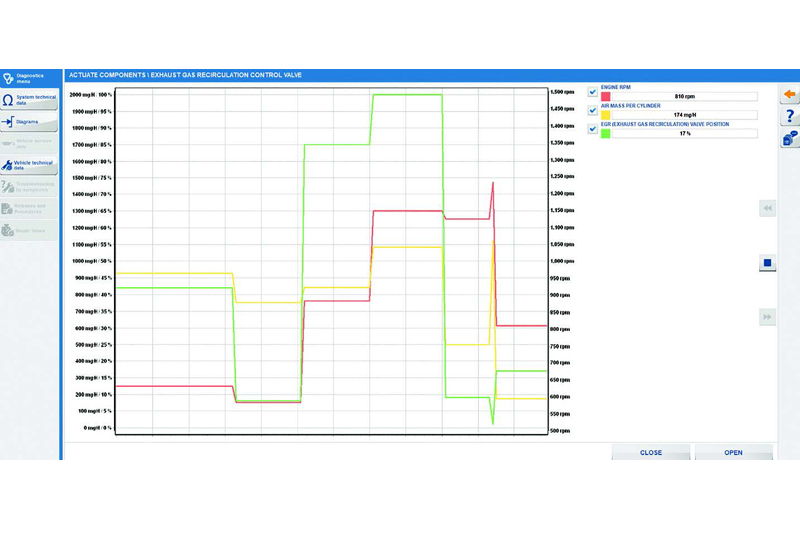
Eclipse Automotive explains how its Jaltest package helped diagnose the cause of a Mercedes Benz Sprinter’s low boost pressure.
The scenario
A Mercedes Benz Sprinter had developed a low boost pressure and was brought into the workshop for investigation. The technician assigned to the job attempted to make the initial diagnosis with Jaltest software to see whether any codes had been logged that could provide a suitable starting point.

Once linked to the CDID3 engine management control unit, a diagnosis of the ECU’s faults was made, providing a current error of P2263, which read that the boost pressure was deviating from the specific value. When considering this fault, the most likely scenario was that there was an intake leak, intercooler, turbocharger, etc. However, this may not have been the case, as many other factors could have created the problem.
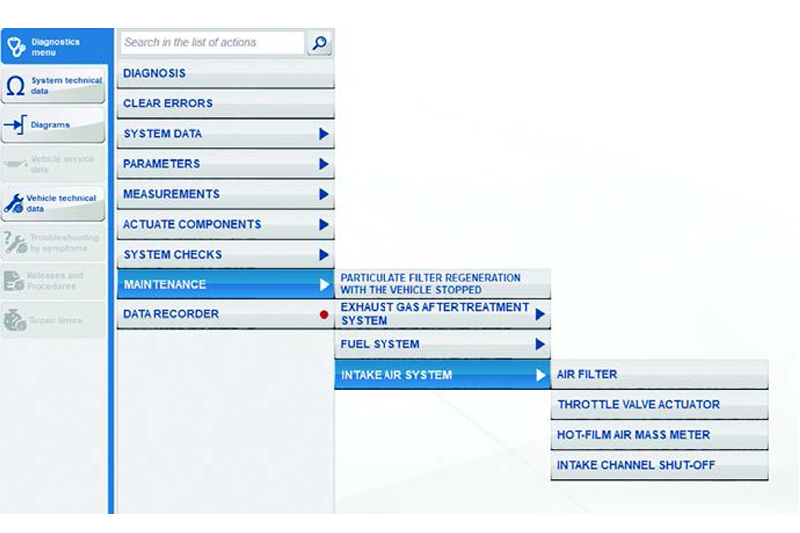
Using the Jaltest software, the technician carried out extensive tests to check that they could continue without needing to replace components at random as a means of finding the fault. These tests comprised: testing the boost pressure actuator and wastegate valve, turbocharger dynamic checks for performance and sealing test of the intake system, as well as live measurements and graph production (as shown in Fig.1 and 2).
The technician performed the checks and despite finding nothing wrong with the turbocharger and intake system, the vehicle still lacked performance on a road test. The technician was starting to run out of ideas, and so, called Eclipse Technical Support for assistance and guidance into what else may be causing the fault.
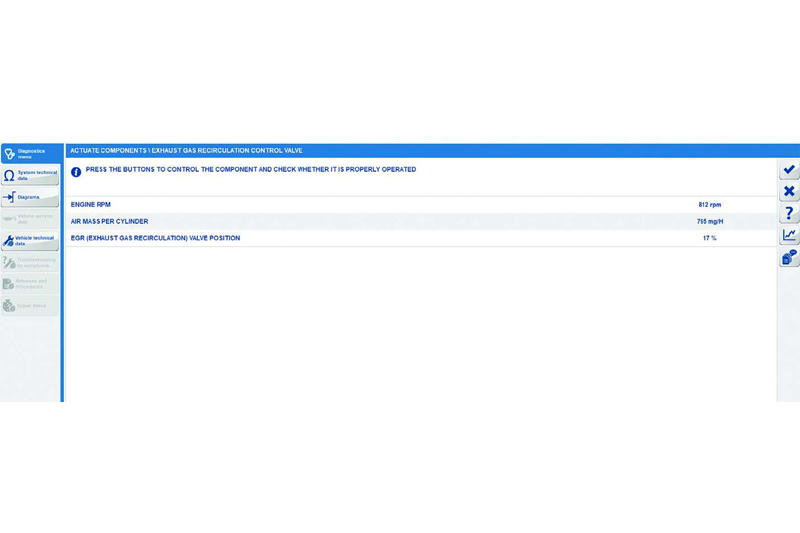
When the Eclipse Technical Support Team received the call, the fault code was run against its database, which holds all historic information, common faults and outcomes of repairs; an invaluable tool that is used on a daily basis to assist customers. Fault code P2263 populated a number of logged instances and gave several possible areas that have caused this fault on other occasions; one being EGR and another, the DPF.
The Eclipse support technician suggested that the checks needed to be made on the EGR and DPF systems to ensure correct operation. These can be done via the remote assistance feature of the system should the customer be unsure about what needs to be carried out with the Jaltest software.
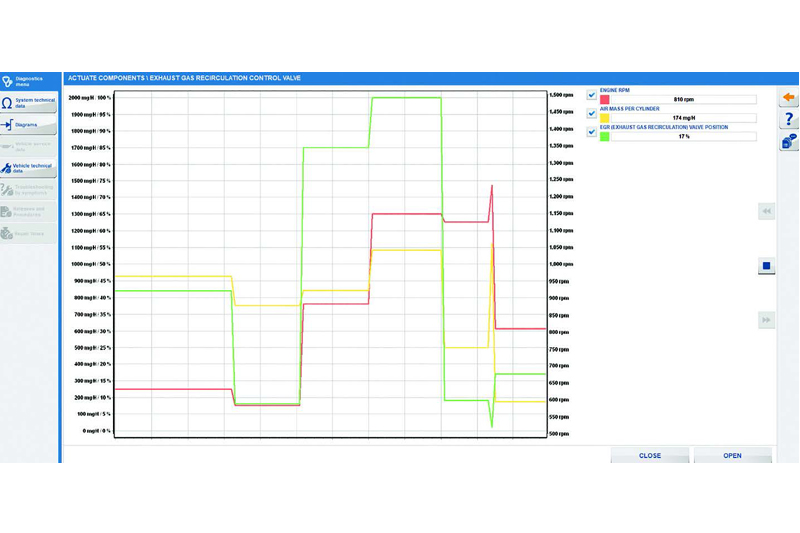
In this case, the technician asked for the Eclipse support technician to take over. They first checked the EGR system, making sure the EGR valve was opening and closing to the nominal values set by the control unit and also that the position sensor read correctly. The screenshots above (Fig.3 and 4) is what they saw, and from this, it is possible to confirm that its operation was correct.
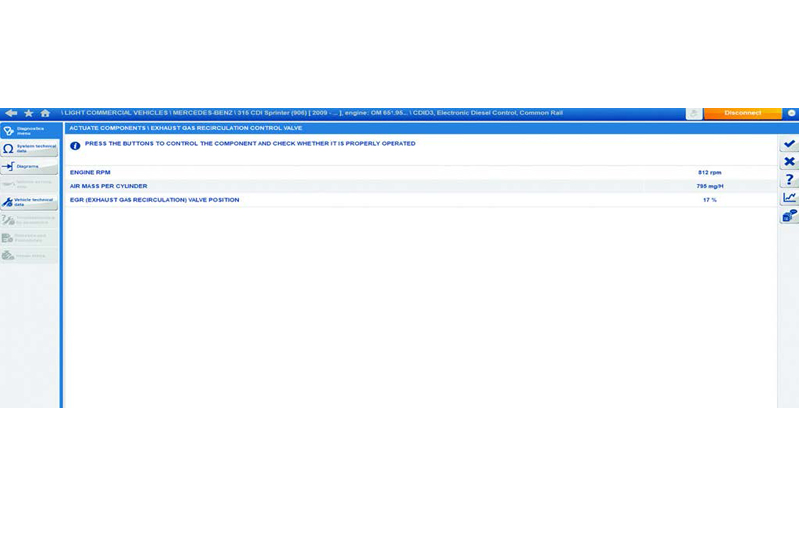
Next, Eclipse support moved onto the DPF, as any blockage or restriction in the exhaust system or filter would cause a back pressure affecting the turbocharger operation and create the fault code P2263. They asked the customer to start the vehicle and monitor the DPF differential pressure, as well as the soot load at different RPMs to get a clear picture of what was happening (Fig.5).
When this is initiated, the soot load can be shown either in a percentage, or grams per litre; a level of 16g will indicate that the DPF is 100% blocked. The support technician saw that the vehicle showed a level of 19g of soot, and so had exceeded its value, meaning that it was completely blocked, requiring forced regeneration, cleaning or replacement.
With the DPF running a high soot level, Eclipse support was confident that this was the problem. However, to confirm, the support technician went on to view the differential pressure sensor that monitors the pressure across the DPF. If the sensor showed a high value, this would confirm the blockage in the exhaust system and provide the evidence that this was the fault. The values at high RPM were over 80mbar, which is extremely high.
After a forced regeneration in an attempt to reduce the soot load and lower the exhaust back pressure, the new readings through the DPF showed that the regeneration had been successful, and a road test ensured it had been brought back up to full power and that the fault code had not recurred.
Conclusion
This scenario proves that a fault code is not always as straightforward as it would first seem and that other factors can contribute to a problem, causing delays to the accurate diagnosis and repair of the vehicle.
Often the technician, whether in the workshop or outside on a remote call, will make an initial assessment but be unable to determine the exact cause of the vehicle problem and may require further help or assistance with the fault diagnosis.
Eclipse is unique in being able to respond to this requirement with its Eclipse Technical Support Team. The team is available to give assistance either over the phone, or by using the remote assistance function. These highly trained Vehicle Support Technicians and IT specialists can provide assistance in a variety of ways, ranging from providing additional information, such as a wiring diagram, to carrying out a full remote diagnostic exercise on the casualty vehicle and assisting with any IT issues.





